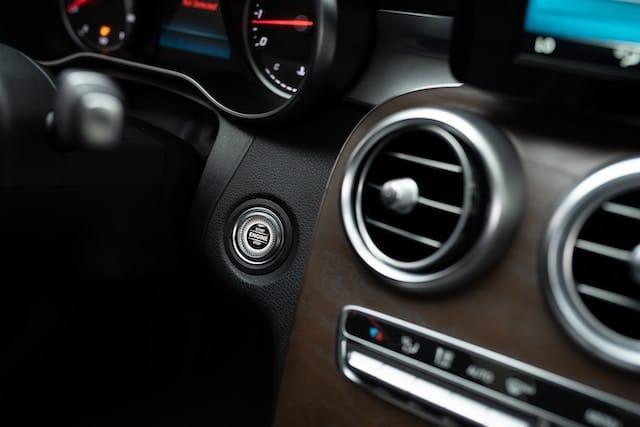
The moment you realize your car heater is blowing cold air instead of warm can be frustrating, especially on a chilly morning. This article will help you identify common causes and offer straightforward solutions for this issue.
Causes of a Car Heater Blowing Cold Air
If your car heater is blowing cold air, there could be various reasons. Some of the common causes include a malfunctioning thermostat, low coolant levels, air trapped in the cooling system, a damaged heater core, and a stuck blend door. Electrical problems, a faulty blower motor, defective heating controls, and water leaks in the coolant system are also potential culprits. Understanding these causes can help you identify the problem and find a suitable solution, ensuring a warm and comfortable drive.
Thermostat Problems
A faulty thermostat is often to blame. If it’s stuck open, the engine won’t reach operating temperature. Check the thermostat and replace it if necessary.
Low Coolant Levels
Inadequate coolant can also cause cold air. The heater relies on hot coolant to generate heat. Check the coolant level and refill it if low.
Air in the Cooling System
Air pockets can disrupt coolant flow. They reduce the system’s efficiency, leading to cold air. Bleed the system to remove any air pockets.
Damaged Heater Core
A leak or clog in the heater core is another culprit. You’ll typically notice fogging on your windshield too. In this case, consult a mechanic.
Malfunctioning Blend Door
If the blend door in the HVAC system is stuck, it won’t mix cold and hot air properly. Inspect the door and its actuator, and repair if needed.
Electrical Issues
Wiring or fuse problems can affect the heater. If the heater’s electrical components aren’t working, consult your vehicle’s manual to locate the correct fuse or wiring to inspect.
Blower Motor Issues
A faulty blower motor won’t circulate air well. This results in weak airflow that feels cold. Replace the motor if it’s not functioning properly.
9 Easy Tips to Check Your Car Heater

By following these tips, you might be able to identify the cause of the issue or at least gather information that will be helpful when you consult a mechanic.
Check the Thermostat Dial
Make sure the thermostat in the car is set to ‘Hot’ or the highest temperature setting. Sometimes, a simple oversight can be the reason behind cold air blowing.
Inspect Coolant Level
Open the hood and find the coolant reservoir. If the liquid appears below the ‘Min’ line, you might need to add more coolant.
Look for Puddles
Check under the car for any water or coolant puddles. This could indicate a leak that needs professional attention but will give you an idea of what might be wrong.
Test the Fan
Turn on the fan while keeping the heater on. If the fan is also not blowing air, it could indicate electrical issues.
Switch Air Modes
Switch between different air modes like defrost, feet, and face settings. If one setting blows hot but another does not, the issue might be with the blend door.
Feel the Hoses
With the car running and the heater on, carefully feel the two hoses going into the firewall. They should be warm to the touch. If not, it may point to a thermostat or coolant flow problem.
Review Dashboard Gauges
Look at the temperature gauge on your dashboard. If the needle is in the ‘cold’ area for an extended period, your thermostat might be the issue.
Sniff for Sweet Smells
A sweet, syrupy smell in the cabin can indicate a coolant leak, which would require professional attention.
Check Electrical Components
Quickly examine the fuses in the car. Your car manual can guide you on where to find them. Replace any that are blown.
If you’ve tried these easy tips and your car heater is still blowing cold air, it’s likely time to consult a professional. Problems with car heaters can sometimes be complex and require specialized tools and expertise to diagnose and fix. In such cases, visiting a mechanic or an auto repair shop is usually the best course of action to ensure your vehicle is properly repaired and safe to drive.
Estimated Cost Ranges for Common Car Heater Repairs
The cost to repair a car heater can vary widely depending on the specific issue and the make and model of your vehicle. Here are some general price ranges for common heater-related repairs:
Thermostat Replacement: $50 – $250
Replacing a thermostat can be one of the more affordable fixes. The price range here includes both parts and labor.
Coolant Flush: $100 – $200
A coolant flush may be necessary if your coolant is dirty or contaminated. This generally isn’t too expensive.
Heater Core Replacement: $500 – $1,400
This is a more serious issue that involves replacing the heater core. It’s often labor-intensive, making it more expensive.
Electrical Repairs: $100 – $400
If the issue is electrical, such as a blown fuse or bad wiring, it might cost you somewhere in the $100 to $300 range.
Blend Door Actuator Replacement: $150 – $550
If the problem is a faulty blend door actuator, the cost could be a bit higher due to the labor involved in accessing the part.
Leaks and Hose Repairs: $100 – $500
Repairing leaks or hoses can range from relatively inexpensive to more costly, depending on the location and severity of the leak.
Diagnostic Fees: $50 – $200
Most mechanics will charge a diagnostic fee to identify the issue, but this may be waived if you proceed with the repair at the same shop.
It’s advisable to get multiple quotes and consult your mechanic for a more accurate estimate tailored to your vehicle. Always ask for a detailed breakdown of costs to know exactly what you’re paying for.
Regular Maintenance
Regularly checking your vehicle’s fluids and systems can prevent heater issues. Include this in your maintenance routine to stay warm on the road.
Weighing the Pros and Cons: Repairing Car Heater vs Buying a Portable One
Financial Dilemma
For some people, the cost of repairing a car heater can be a significant burden. Repair bills can range from $50 to $1,200. On the other hand, portable car heaters usually cost between $20 and $100. For those on a tight budget, the portable heater offers an immediate, budget-friendly solution.
Severity of the Issue
If the problem with your built-in heater is minor and inexpensive to fix, it’s generally more logical to repair it. However, for severe issues that require costly repairs, a portable heater can provide temporary relief.
Geographical Location
If you live in a milder climate, a portable heater might serve as a more permanent solution. In colder climates, however, a built-in heating system is almost a necessity for safety and comfort.
Convenience
Built-in car heaters are generally more efficient and convenient than portable ones. Portable heaters require setup each time you use them and might not heat your car as effectively.
Energy Source
Most portable heaters use the car’s battery, which could drain if you use the heater extensively. Built-in heaters are more energy-efficient.
Resale Value
A functional built-in car heater is expected and doesn’t necessarily boost your vehicle’s resale value. However, using a portable heater as a substitute for a broken built-in heater could negatively impact the value of your car.
Longevity
Built-in heaters, when well-maintained, generally last longer than portable units, which may require periodic replacement.
Safety
Professional repairs to a built-in heater meet safety standards, whereas the safety of portable units can vary.
In summary, both options have their merits. A portable car heater can serve as a temporary or more permanent solution depending on your budget constraints and where you live. However, for long-term efficiency, safety, and convenience, repairing your built-in heater is generally the better choice if you can afford it.
Car Heater is Blowing Cold Air: FAQs

What could cause my car heater to emit cold air?
Various factors can be at play, such as a malfunctioning thermostat, low coolant levels, air trapped in the cooling system, issues with the heater core, a stuck blend door, electrical glitches, or a broken blower motor.
How do I determine if the thermostat is faulty?
To assess the thermostat’s condition, notice how long it takes for your vehicle to warm up. A longer-than-normal warming time or an engine that never reaches its proper temperature could point to a malfunctioning thermostat. If the upper radiator hose is cold to touch even when the engine is warm, your thermostat might be stuck open and require replacement.
Can a coolant deficit affect the heating system?
Absolutely. A low coolant level can result in insufficient heat generation as the heater core relies on hot coolant. Make sure to check and top up your coolant if needed.
What’s the procedure for eliminating air from the coolant system?
Trapped air in the coolant system can hinder its efficiency, leading to your car heater emitting cold air. You can remove this air by “bleeding” the system, a process often involving opening a bleed valve while the engine operates. Consult your vehicle manual for detailed instructions.
How do I know if my heater core is compromised?
Symptoms of a damaged heater core include cold air from the heater, fogging on your windshield, or a peculiar sweet smell in the car cabin. For a precise diagnosis, consult with a professional mechanic.
How can I rectify a non-operational blend door?
If the blend door in the HVAC system is not functioning correctly, it won’t adequately mix the cold and hot air. The actuator responsible for the door’s movement might need replacement. Check your car manual or seek advice from a mechanic.
Could electrical issues be the root cause?
Certainly. Electrical issues like blown fuses or problematic wiring could be causing the heater to malfunction. Refer to your car manual for information on how to locate and examine the relevant fuses and wiring.
How does a malfunctioning blower motor affect heating?
An ineffective blower motor will result in poor air circulation, making it seem like your heater is emitting cold air. If you find that the blower motor is not functioning as it should, consider replacing it.
What routine maintenance can avoid these problems?
Regular maintenance activities, such as checking coolant levels, inspecting the thermostat, and evaluating electrical components can be beneficial in preventing these issues. It’s wise to incorporate these checks into your regular car maintenance schedule.
Whom should I consult for complex repair needs?
For intricate issues like a damaged heater core or significant electrical problems, it’s advisable to seek assistance from a qualified automotive mechanic. Basic tasks like changing the thermostat or topping up the coolant can generally be done at home.


